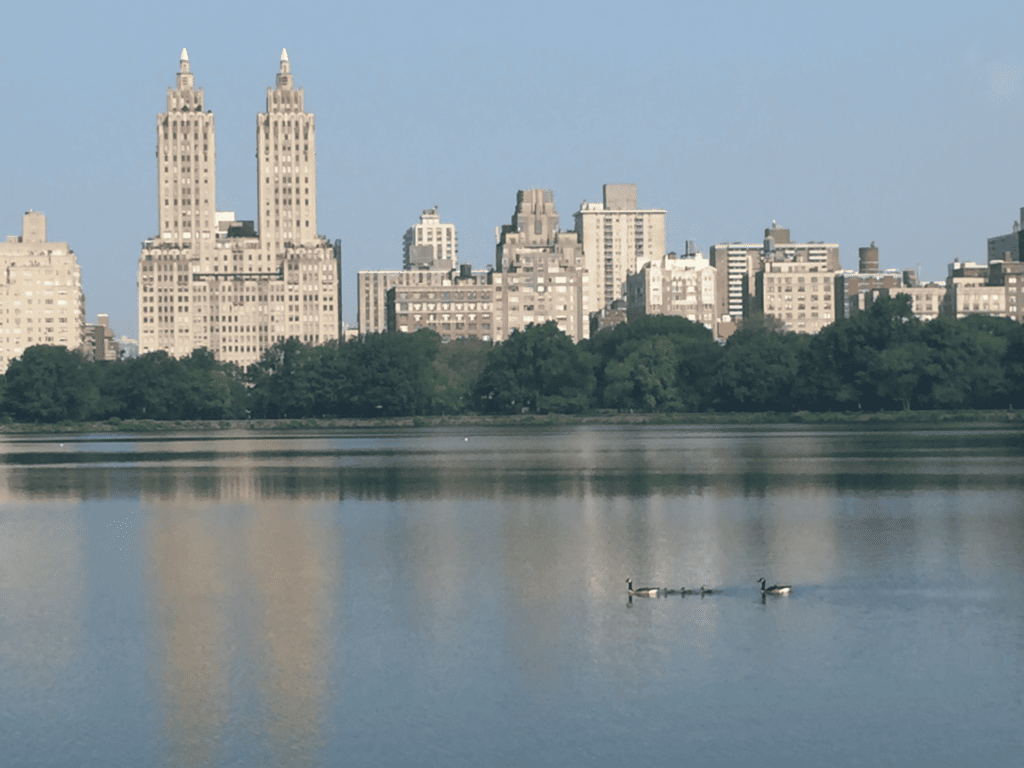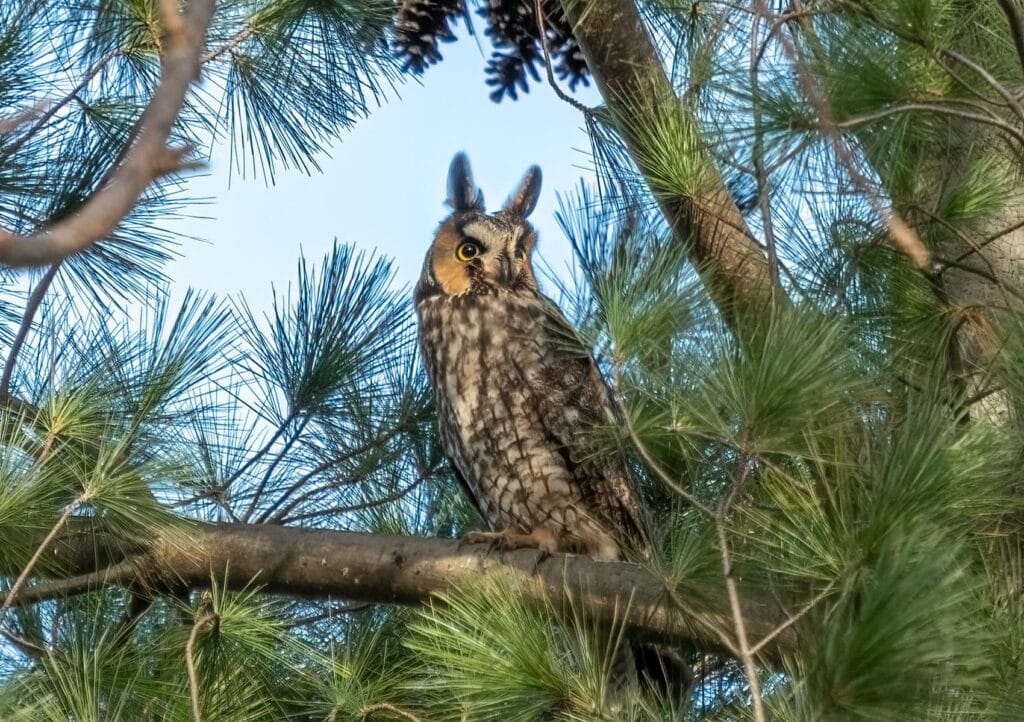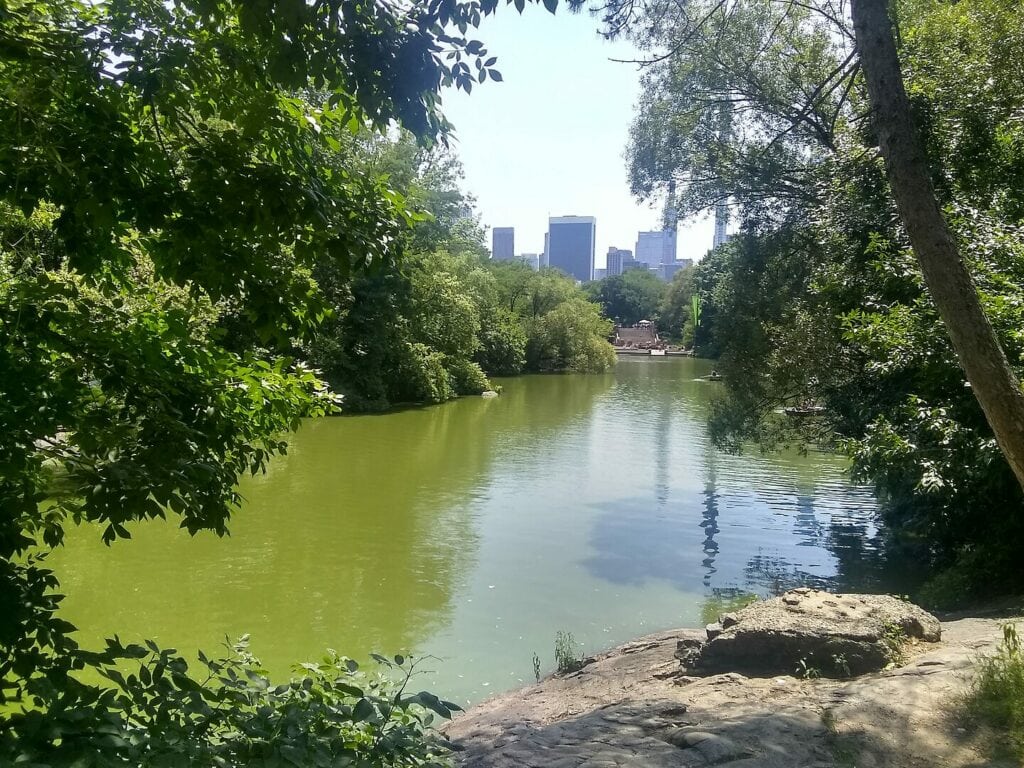CENTRAL PARK BIRDING — WHY IT’S SPECIAL
By Ilana DeBare
What makes birding in New York’s Central Park different from birding in the Bay Area?
(Um, you mean beside the hundred or so skyscrapers ringing the park, the 8.5 million people living around it, and the 42 million people who visit it each year?)

That question was on our minds as we organized this year’s Birdathon Adventure Auction, with prizes that include a three-night hotel stay in Manhattan and a private, expert-led bird walk in Central Park. So we turned to an authoritative source—Glenn Phillips, Executive Director of Golden Gate Bird Alliance, who lived in New York for 27 years, including eight at the helm of NYC Audubon, before returning to his childhood roots in the East Bay.
Phillips had two answers, one about birds and one about humans.
The Birds“It’s the abundance of warblers, first and foremost,” he said. “Central Park is one of the best places to see them in spring and fall. In spring, in almost any section of the park, you can get ten species of warbler on any given day. You just can’t do that in California.”


Beyond warblers, the park offers a variety and density of birds that is remarkable for such a compact area. That’s because of its nature as a unique oasis within a vast, concrete urban area. Migrants moving north and south along the East Coast stop off in the 843-acre park for rest, food, and water. More than 280 species have been recorded in Central Park, including 192 that are year-round residents or regular visitors.
“Because it’s this island of green in the middle of the city, the density of birds is much higher,” Phillips said. “You can see more birds in a limited time and space. And when there’s a storm the night before, you get a migratory fallout. The storm sets in at night when birds are already on the move and they look for the nearest open space. The trees are literally dripping with birds.”

Two of his personal favorite sightings in Central Park have been:
- Owls. “Central Park is really great for owls. One year there was a group of three or four Long-eared Owls roosting every night in the same tree in the Pinetum. I saw them six or seven times that winter before they moved in.”
- His first Prothonotary Warbler. “It was in The Ramble, right on the lake. I expected I wouldn’t get a good sighting and it would be on the top of a tree, but it was right out on a low branch at the edge of the water. You didn’t even need binoculars. It is a spectacular bird.”

The Humans
It’s not just the birds that make Central Park special, though. It’s the birders.
“One fun thing is that the birders are as dense as the birds,” Phillips said. “You can’t go ten feet, especially in the spring and fall, without running into another birder. People really know where the birds are and are generally helpful and friendly. If you’re looking for a [particular] bird, a New Yorker will walk you over to where it is.
“Once a rare bird is spotted, it’s continuously sighted for a whole day. Someone will have seen it. Just look for a group of people and go over and say, “What are we looking at today?’”
The Central Park birding community was profiled in the delightful 2012 documentary, “Birders: The Central Park Effect.” (Phillips is shown leading a Christmas Bird Count in the park, although his interview footage didn’t make the final cut.) Both the film and the Covid-19 pandemic have increased the number of people birding in the park, although it’s still possible to find remarkable silence and peace there. The community has its irritants, such as individuals who use recorded bird-call playback too much. But by and large, it’s a welcoming group. Phillips routinely ended his morning outings at the Central Park boathouse, where birders gather for coffee, bagels, and friendly chat.
“You run into all the usual suspects trading notes such as ‘I missed the Yellow-throated Warbler, ‘” he recalled.
Gabriel Willow
Phillips said it’s hard to find a better guide for Central Park than Gabriel Willow, the naturalist who is providing the private outing in the Birdathon Auction prize. Willow worked for Phillips for years at the Prospect Park Audubon Center and at NYC Audubon before branching out on his own as a private bird guide.

“He’s a fantastic birder who is deeply knowledgeable about birds—their whole life stories and natural history,” Phillips said. “I always learn something when I go out with him. He’s engaging. And I learned everything I know about how to get people to see birds from him. He can get everyone on every bird every time.”

Glenn Phillips’ Tips for Central Park Birding
- The Ramble is the most popular and dense birding site, but there’s also good birding at Strawberry Fields and the north end of the park near the Harlem Meer.
- Visit Strawberry Fields (named for John Lennon, who lived in the nearby Dakota apartments) in the early morning. Its small hill gets early morning sunlight, which bring out the bugs, which in turn bring the birds.
- Spring offers the greatest variety of birds, including all those warblers in breeding plumage, and summer the least. Fall has migrants also, though they are less colorful and more dispersed over time. Winter can offer woodpeckers and flocks of Cedar Waxwings.
- Consider birding beyond Central Park too! Phillips has had great sightings in the unlikely spot of Bryant Park, a tiny one-block park behind the main branch of the N.Y. Public Library. “I’ve seen American Woodcock, Ovenbird, and all sorts of warblers there,” he said. “Because the birds that end up there are so desperate [for a rest-and-refueling stop], they’re practically fearless. They’re very easy to see.”
About the Central Park Birding Auction Package:
This auction prize includes three nights at the New York Hilton Midtown and a morning bird walk with Gabriel Willow. Central Park is a six-block walk from the Hilton, and Bryant Park is about 12 blocks in the opposite direction. (The Hilton is also conveniently close to Broadway theatres, Fifth Avenue shopping, and countless restaurants!)Online bidding opens on May 5 and runs through May 20, 2024. Click here for more details and to place a bid. Many thanks to Marjorie Powell for donating the hotel stay and Gabriel Willow for donating the birding trip.
